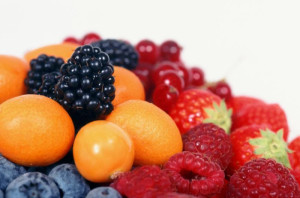
Yes, it absolutely can be your hormones and it often is! While I’ve seen hair loss due to low iron and other nutritional deficiencies, I usually see patients with thinning hair due to hormonal causes.

Yes, it absolutely can be your hormones and it often is! While I’ve seen hair loss due to low iron and other nutritional deficiencies, I usually see patients with thinning hair due to hormonal causes.

The thyroid is a butterfly-shaped endocrine gland that spans approximately two inches long in the front of the neck. It is an important part of the endocrine system and is responsible for producing hormones that control many of the body’s vital functions, including metabolism.

Non-melanoma skin cancer is the most common cancer among humans and solar UV radiation, particularly its UVB component (290-320 nm), is its major cause. One way to reduce the occurrence of the cancer is via the use of substances (often antioxidants) termed “photochemopreventive agents”. ‘Photochemoprotection’, which we define as ‘the use of agents capable of ameliorating the adverse effects of UVB on the skin’. Among many photochemoprotective agents, botanical antioxidants are showing promise. Because UV radiation is known to cause excessive generation of reactive oxygen species (ROS) thereby resulting in an oxidative stress condition. Approaches aimed at counteracting ROS production may be useful for the prevention of skin cancer. One approach to reduce its occurrence is through the eating of foods that have resveratrol in them. Resveratrol (trans-3,4′,5-trihydroxystilbene), a phytoalexin found in grapes, nuts, fruits, and red wine, is a potent antioxidant with strong anti-inflammatory and antiproliferative properties.
By
Dr. Quinn Rivet B.Sc., ND
For many years doctors have been treating kidney disease, high blood pressure and heart disease with drugs that block something known as angiotensin II (anne-gee-o-ten-sin-two) or short form Ang II. Ang II can cause constriction of the blood vessels and salt retention so blocking it can help relax the vessels and put less stress on the vessels and thus the kidneys and heart.
Both men and women  experience changes in hormone production starting anywhere from mid-thirties to late forties and beyond. Menopause aka “the change” is well-know and expected for women surrounding the age of 50. However more and more information and research is being done regarding the change in men’s hormone productions, specifically testosterone, and has been named andropause. Androgens are the male-associated hormones testosterone and DHEA primarily. it is important for both men and women to know that you don’t have to suffer! Hormones can be balanced, increased and decreased with diet, lifestyle, supplements and bio-identical hormone replacement therapy.
experience changes in hormone production starting anywhere from mid-thirties to late forties and beyond. Menopause aka “the change” is well-know and expected for women surrounding the age of 50. However more and more information and research is being done regarding the change in men’s hormone productions, specifically testosterone, and has been named andropause. Androgens are the male-associated hormones testosterone and DHEA primarily. it is important for both men and women to know that you don’t have to suffer! Hormones can be balanced, increased and decreased with diet, lifestyle, supplements and bio-identical hormone replacement therapy.
For men, testosterone levels can vary throughout life at different ages. Confidence, drive, sexuality, skin appearance, hair line (or hair loss), prostate health and cardiovascular health are all aspects that testosterone influences. When levels of testosterone or it’s derivatives are low, many aspects can be affected. Sometimes test results will show that there is an excess of hormone conversion (eg. to estrogen or DHT). Urinary or salivary male hormone profiles give the complete picture and identifies hormonal deficiencies which can be corrected with diet, lifestyle and supplementation.
For women, peri-menopause signifies the decline of fertility and thus fluctuations in hormone levels. Periods may become irregular, lighter or heavier and can be accompanied by new or worsening of symptoms such as cramping, breast tenderness and mood changes. It is not until 1 year has passed without a period that the term menopause is used. However, during the peri-menopausal phase, women can begin to get hot flashes, night sweats, brain fog, depression, weight gain, vaginal dryness, loss of libido, fatigue etc. Considering that this could be a 10-year or more journey, diet and lifestyle should work towards optimal health which will reduce hormonal symptoms. For example, we know that excess hormones such as estrogen are broken-down in the liver and excreted through the bowels. As estrogen levels rise, symptoms such as heavy periods with short cycles and painful cramps can dominate. In order to help the body rid itself of these excess hormones, these dietary and lifestyle tips can help:
Supplements and cleanses can improve the liver’s ability to detoxify the body. The best cleanses are food-based, those that reduce the “unhealthy foods” and focus on the highest quality options. A 3-week liver tune-up cleanse coupled with a few potent liver herbs and supplements can make a big difference. Individualized treatments and post-cleanse protocols will help further balance and are developed based on test results and symptoms.
 With summer fast approaching so will be amazing BC berries. The latest research in most medical sciences have come to the general conclusion that inflammation plays a huge role in most disease processes; including heart, high blood pressure, diabetes, arthritis, brain disorders, skin, lungs, you name it and most likely inflammation plays a role.
With summer fast approaching so will be amazing BC berries. The latest research in most medical sciences have come to the general conclusion that inflammation plays a huge role in most disease processes; including heart, high blood pressure, diabetes, arthritis, brain disorders, skin, lungs, you name it and most likely inflammation plays a role.
Berries contain many great elements that can help decrease inflammation, and as I have written before, the polyphenolics in berries can do some pretty amazing things, like increase neurogenesis or brain growth!
What are polyphenolics anyway? Polyphenolics all have the same basic structure. They differ however when different oxygen or hydrogen molecules are placed on the basic structure at different points. Depending on where the different oxygens or hydrogens are placed, will give the phenolic its name and action in the body.
Phenolics synthesize in plants to help protect them from viruses and fungal infections and they can do the same in humans. They are very strong antioxidants and anti-inflammatories and can even influence our genetics to help stop the manufacturing of inflammatory chemicals. Phenolics can help strengthen blood vessels, protect the skin from sun damage and protect different organs from inflammation, like the pancreas, kidneys and liver and may help with depression….wow lots of good stuff.
So which berries are the best? Basically any berry that is red, blue or black contain these amazing molecules. How much should you eat? 1-2 servings through the day seems to be good, they are not very well absorbed so more is not better, in fact, eating small amounts throughout the day looks to keep your levels up consistently.
So make sure you have at least 1 serving (1/2 cup) of berries per day to help protect your skin, vessels, organs and brain.
Oh and dark chocolate has phenolics in it too !!
Yours In Health,
Dr. Quinn Rivet, ND
Dr. Rivet is a naturopathic doctor and is currently accepting new patients at Vitalia Health Care.
Sincerely,
The Team at Vitalia Health Care

Spring Promotion:
Receive 10% off any services
when you mention
promo code: Vitalia Spring 2015
*cannot be combined with any other offer
Skin cancer is similar to most types of cancer where a known, single cause has not been found. Most cancers seem to be the result of a complex mix of many risk factors such as life style choices, exposure to known cancer-causing substances in the environment. The frequency and accumulation of the exposure to a risk factor increases the chances that cancer will develop. Therefore it may take many years for cancer to develop after exposure to a risk factor.
Vitalia Health Care would like to welcome Dr. Quinn Rivet to our team! He is known as “The Kidney Guy” in the naturopathic community and we are very excited for him to join our team!